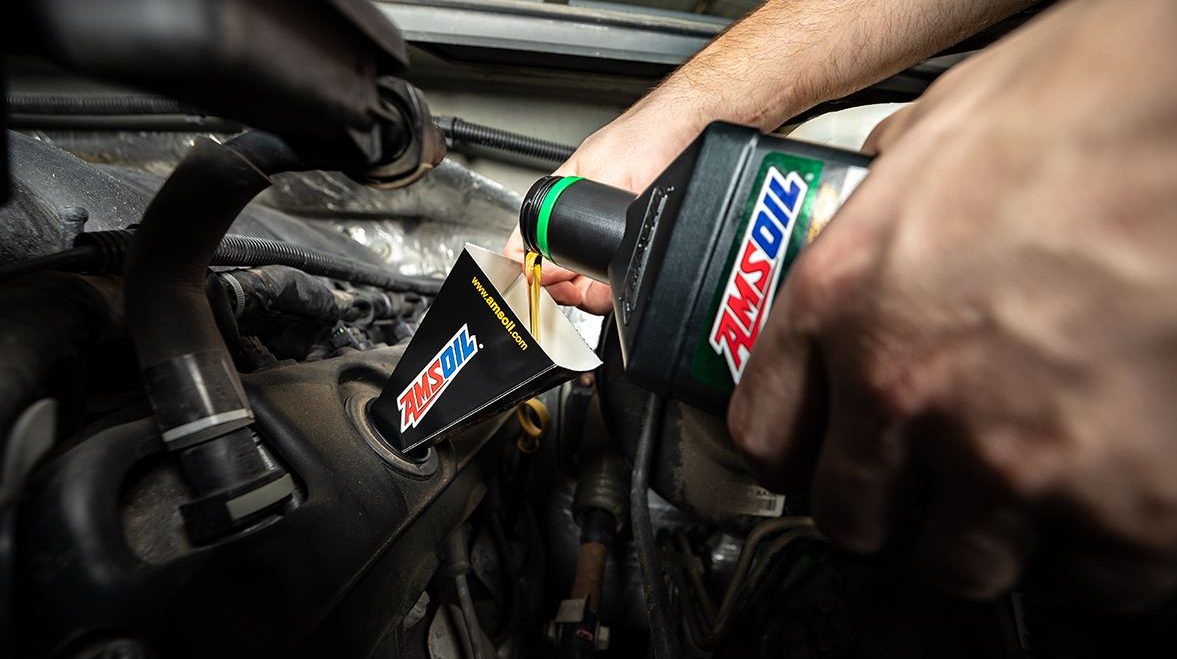Ask AMSOIL: What Happens if I Use the Wrong Weight (Viscosity) of Oil?
Ask AMSOIL: What Happens if I Use the Wrong Weight (Viscosity) of Oil?
Using a motor oil whose viscosity is too low or too high for your engine can invite a few problems, such as reduced fuel economy, increased chemical breakdown and increased wear. To understand why, you should first understand viscosity.
What is viscosity?
Viscosity is defined as a liquid’s resistance to flow. The higher an oil’s viscosity, the less readily it flows from a container when poured. Think of honey and water. Honey has a higher viscosity and flows more slowly than water.
Your vehicle owner’s manual specifies the correct viscosity of oil to use in your engine. Sometimes, it’ll specify a range of viscosities from which you can choose depending on weather. For example, it may recommend 10W-40 in warm weather and 0W-40 in cold weather.
The first number (the “10W” in 10W-40, for example) describes the oil’s ability to flow at 40ºC (104ºF). It’s helpful to think of the “W” as standing for “winter.” The lower the oil’s “W” viscosity, the more readily it will flow when it’s cold.
The second number (the “40” in 10W-40) describes the oil’s ability to flow at 100ºC (212ºF), or normal operating temperature. Higher numbers indicate the oil remains thicker when the engine is hot, which translates into better wear protection. A 0W-40 and a 10W-40 are the same viscosity when the engine reaches operating temperature, but the 0W-40 will flow better in cold weather.
Too low can invite wear
Using an oil that’s too thin can compromise wear protection over time. The oil should adequately fill the clearances between engine parts to help prevent metal-to-metal contact.
The crankshaft journals, for example, ride on a thin layer of oil that forms between the journal and bearing surfaces. If the oil’s too thin to properly fill the space and remain in place, the two surfaces will contact and wear out.
Extreme stress and heat add to the challenge. The oil’s viscosity has a direct bearing on its ability to develop a lubricating film of sufficient thickness to keep parts from contacting. Since oil thins as it’s heated, the already-too-thin oil becomes even thinner under extreme heat, worsening the problem.
Oil that’s too thin can also lead to insufficient oil pressure to properly support variable valve timing systems in newer engines. Low oil pressure may also result in the lifters not staying in contact with the cam lobes, causing noise and increased wear.
Too thick reduces fuel economy
Since higher viscosity oils offer better load-carrying ability, hence wear protection, you’d think using the highest viscosity oil possible would make sense. Why not use 20W-50 in everything?
Thicker oil, for one, is tougher to pump throughout the engine, which reduces fuel economy. The oil also won’t reach vital components at startup as quickly as lower-viscosity oils, inviting wear.
In cold weather, oil that’s too thick can hinder your engine’s ability to start, straining your battery at best, and leaving you stranded at worst.
Overly thick oil doesn’t transfer heat from engine parts as readily as thinner oils. Increased viscosity also increases internal friction, which increases operating temperatures. Higher temperatures cause oil to oxidize faster, or chemically break down. This eventually leads to sludge that, if bad enough, can block oil passages and starve the engine of oil, leading to engine failure.
To ensure best protection for your engine and to alleviate potential warranty concerns, it’s best to use the viscosity of motor oil recommended in your owner’s manual. If you have questions or concerns, contact AMSOIL Technical Services (tech@amsoil.com

